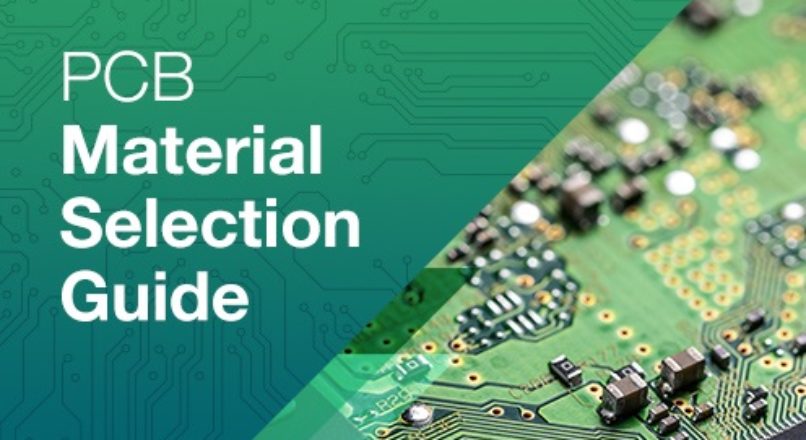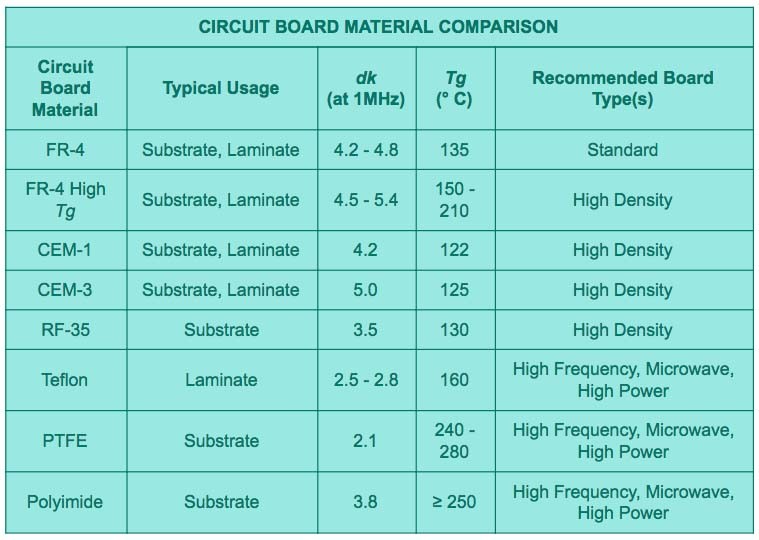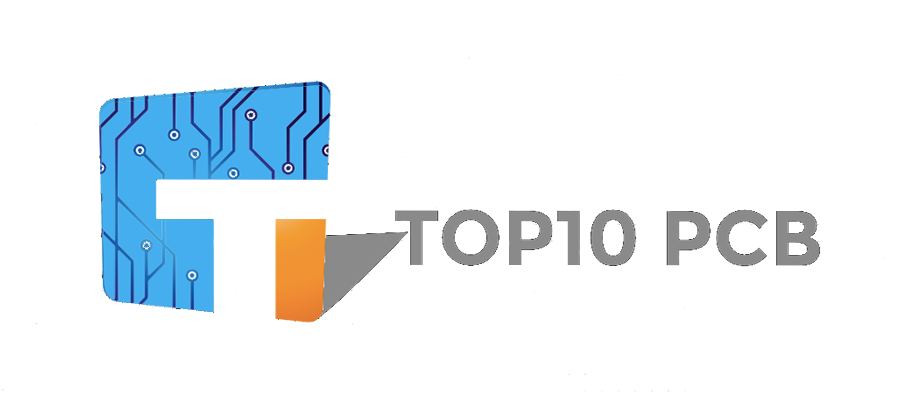
How To Select PCB Material for High Speed PCB Design?
During PCB board design, choosing adapted PCB Material is so important. You will get some professional PCB material selection guide here for high-speed PCB design.
PCB general consists of a substrate (or core) and the laminate. The substrate is the non-conductive dielectric material, typically chosen based upon the dielectric constant (DK). Laminates, when used in conjunction with substrates, provide the copper foil or surface material. However, laminates may themselves be used as the core material in some board constructions.
Dielectric Constant or Relative Permittivity (Er or Dk)
Two of the most important factors that determine the electrical performance of a dielectric constant are impedance and signal integrity. The dielectric constant (Er) or relative permittivity (Dk) of a PCB material is generally between 3.5 and 5.5. A material’s Er level depends on the frequency and will usually drop as the frequency rises. The Dk level changes less on certain PCB materials than on others. For a material to be safe for applications that involve high frequencies, it must maintain a stable dielectric constant over a broad range of frequencies.
Substrates
Substrates are typically dielectric composite structures that are comprised of epoxy resin and paper or glass weave (sometimes unwoven), which may be supplemented by ceramics to increase the dielectric constant. Substrates are made to meet certain property requirements, like the glass transition temperature (Tg), which is the point where heat causes the material to deform or soften and may be customized. However, there are a wide variety of standard substrates from which the majority of PCBs are fabricated.
Laminates
Laminates are manufactured under pressure and consist of cloth or paper layers and thermoset resin. Just as with substrates, laminates can be made to meet custom requirements or properties. Properties of interest for laminates include tensile and shear strength, the coefficient of thermal expansion, CTE, and Tg.
Glass Transition Temperature (Tg)
A PCB substrate softens when exposed to temperatures above a certain threshold. The substrate hardens back to its natural state once removed from heat. The range at which this transformation can be applied to a substrate is known as glass transition temperature (Tg) — a unit noted in degrees Celsius.
The coefficient of Thermal Expansion (CTE)
A PCB’s expansion rate is known as its CTE. When a substrate is exposed to temperatures that exceed its Tg, the material will also undergo a rise in CTE, which is measured in parts per million (ppm). A substrate will generally have a high CTE than a copper layer. This difference is sometimes the source of interconnection problems when heat is applied. Due to the constraints of woven glass around PCB material, CTE is typically in the range of 10 to 20 ppm across the X and Y axes. Even when the temperature surpasses the Tg threshold, the CTE remains the same. The CTE should be kept to a bare minimum across the axis because this is the direction in which the material will expand. To be on the safe side, a CTE of 70 ppm or under is recommended.
the range of CTE.
Below table provides circuit board materials that can be used for standard and special PCB board types and can, therefore, help you make the best selection.

Also the power and Heat impact on PCB material selection. Out of all the factors that impact PCBs, two of the most intensive are power and heat. For example, Rogers Corp. carries a PCB material, RT/Droid 5880, that is often applied in EW and communications. The dielectric constant of this material is low, as it’s a composite material that contains microfibrous glass elements. These microfibers aim to boost the strength of the fiber in the material.
Although the PCB is ideal for applications to utilize high frequencies, the material’s low thermal conductivity, made it easily heat, which can be a huge drawback in heat-intensive applications.

Comments ( 2 )
Hi! 86pcba.com
We suggesting
Sending your message through the Contact us form which can be found on the sites in the Communication section. Feedback forms are filled in by our program and the captcha is solved. The superiority of this method is that messages sent through feedback forms are whitelisted. This technique raise the probability that your message will be open.
Our database contains more than 25 million sites around the world to which we can send your message.
The cost of one million messages 49 USD
FREE TEST mailing of 50,000 messages to any country of your choice.
This message is automatically generated to use our contacts for communication.
Contact us.
Telegram – @FeedbackFormEU
Skype FeedbackForm2019
Email – FeedbackForm@make-success.com
WhatsApp – +44 7598 509161
Toncils Infection Amoxicillin Acheter Du Viagra Ou Cialis cialis overnight shipping from usa Osu Acheter Baclofen Zithromax Fast Delivery